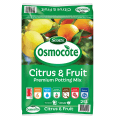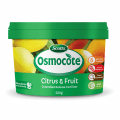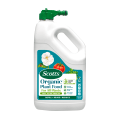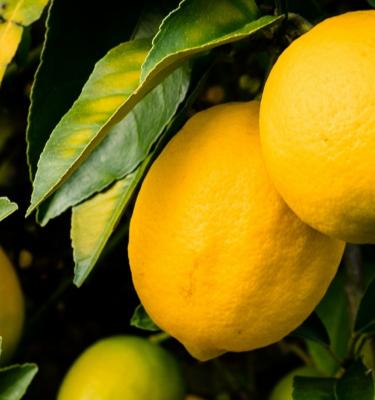
7 Most Common Citrus Pests & Diseases
Citrus trees may be tough, but they’re not invincible. From sneaky sap-suckers to fungal foes, there are a few common pests and diseases that can throw your trees off track.
1.
Lemon Tree Gall Wasp
Lemon tree gall wasps are a common pest that target soft, new shoots on lemon and other citrus trees. The adult wasps lay their eggs just under the bark, and as the larvae hatch, they trigger the tree to form unsightly woody galls around them. These lumps can stunt growth and weaken your tree over time.
The larvae develop inside the galls and eventually pupate. Come spring, adult wasps emerge through tiny holes and go on to infest more trees — especially those with fresh new growth.
You’ll start to notice galls forming from late autumn. While it might be tempting to prune them all out in winter, heavy pruning can encourage a fresh flush of soft new shoots right when adult wasps are emerging — and that’s exactly what they’re looking for.
Instead, the best method is to carefully slice open the galls with a sharp knife or even a potato peeler to expose the larvae inside. This disrupts their life cycle and stops the next generation.
Always dispose of the gall material by wrapping it in plastic and putting it in the rubbish bin — not your compost, where they could still hatch and spread.
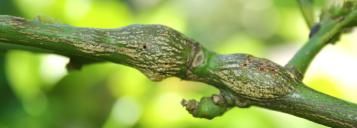
2.
Sooty Mould
Sooty mould is a black fungus that grows on the sticky honeydew secreted by sap-sucking insects like aphids and scale. You’ll often spot it on the undersides of leaves or along the stems of new growth — exactly where these pests like to hang out.
The good news? You don’t need to treat the mould itself. Remove the pests, and the sooty mould will clear up on its own. Keep an eye out for the insects, and act early to protect your plants and keep foliage looking fresh and healthy.
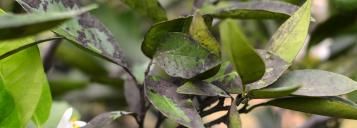
3.
Crown Rot
This disease tends to show up around the graft union — the natural weak spot where the rootstock and plant were joined. If this area is damaged or sitting too close to moist soil, it can become vulnerable to fungal infections.
The best fix? Apply a fungicidal poultice to protect and treat the affected area. And as always, keep the graft above soil level and avoid overwatering to help prevent future flare-ups.
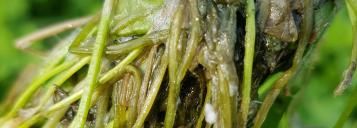
4.
Scale Insects
Scale insects might look like harmless bumps on your plant’s stems or leaves, but underneath that shell-like cover is a sap-sucking pest doing serious damage. There are two main types: hard scale and soft scale (the ones responsible for that sticky honeydew and sooty mould).
You’ll usually find them clustered on the undersides of leaves and new, soft growth. While you can scrape them off with a fingernail, the most effective and fuss-free fix is to spray them with a horticultural or eco oil, which works by smothering the insects — no harsh chemicals needed.
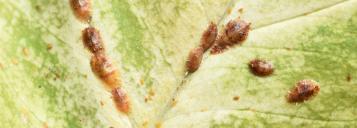
5.
Citrus Leafminer
This tiny pest is a common culprit behind distorted, curly leaves and those tell-tale silver squiggles on lemon, orange and other citrus trees. Active from late December through to April, the citrus leafminer is actually a small, night-flying moth. It lays its eggs on the undersides of soft new leaves, where the larvae hatch and burrow just beneath the surface, tunnelling their way through the leaf.
While you can’t reverse the damage already done, applying a horticultural or eco oil every 2–3 weeks during the active period will help control new infestations and protect fresh growth.
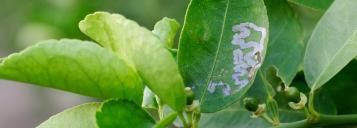
6.
Aphids
Just like scale, aphids are sap-sucking pests that target soft new growth. Left unchecked, they can cause twisted, stunted leaves and weaken your plants. They also secrete sticky honeydew, which attracts ants and can lead to sooty mould taking hold.
The good news? A quick spray with Defender Pyrethrum Insect Spray will knock them back fast and help keep your plants looking healthy and happy.
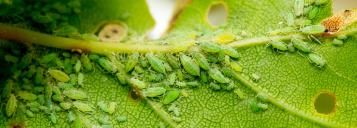
7.
Fruit Fly
This pesky pest is becoming more common across Australia — now reaching as far south as Victoria, though it’s still most active in the warmer, more humid regions of NSW and Queensland. Female fruit flies lay their eggs inside ripening fruit, causing it to rot from the inside out.
To help protect your citrus, it’s important to collect and dispose of all fruit, including any that have fallen to the ground. Yellow sticky traps and liquid lure traps are highly effective — they attract the flies and stop them before they can do damage.
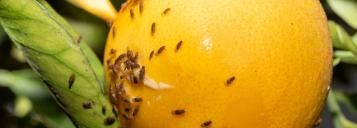
Did you know?
That a healthy and well-fed citrus tree is less prone to pests and diseases? So, to ensure your citrus trees are productive, strong and healthy, feed them with Scotts Osmocote Controlled Release Fertiliser for Fruit & Citrus.

